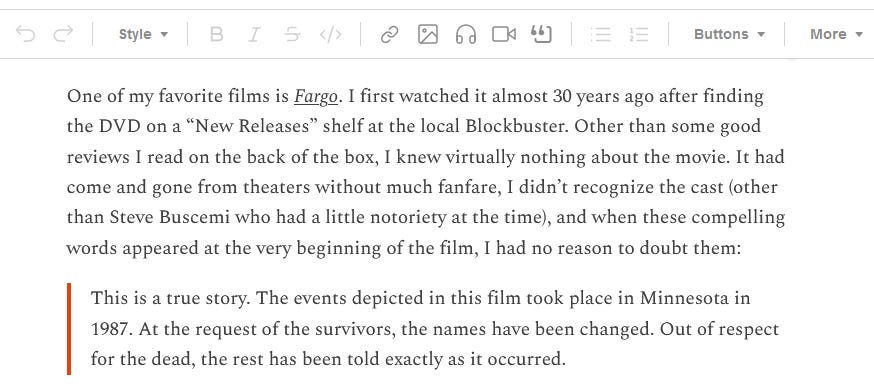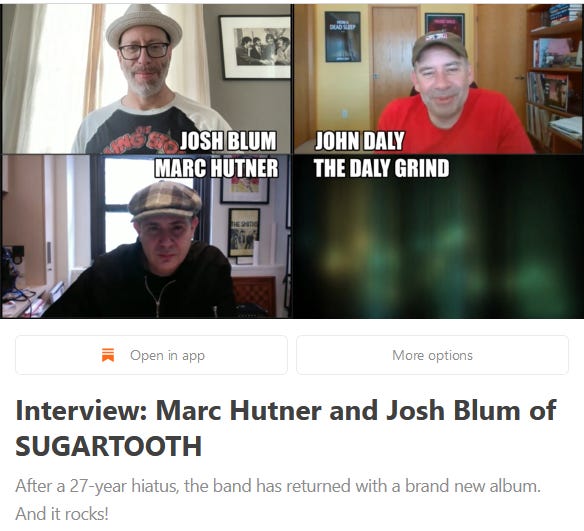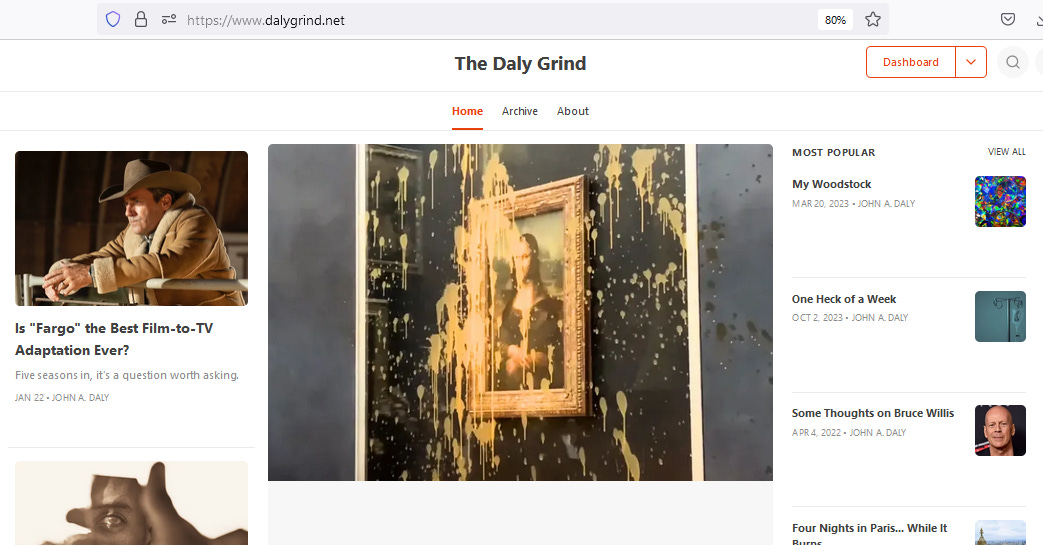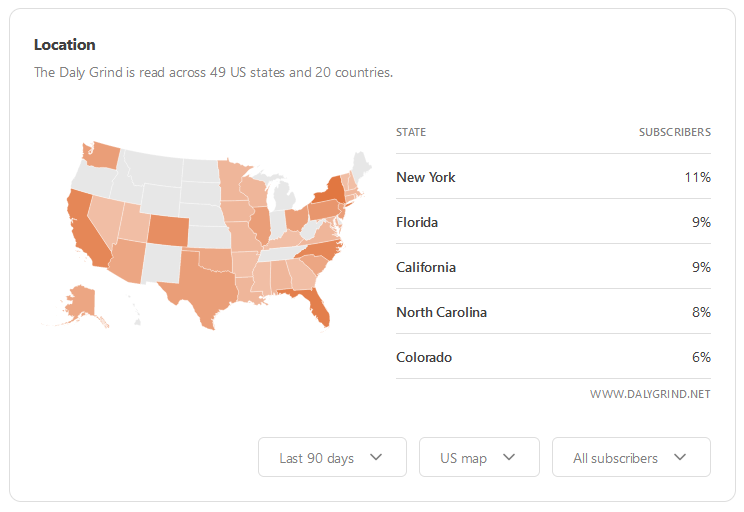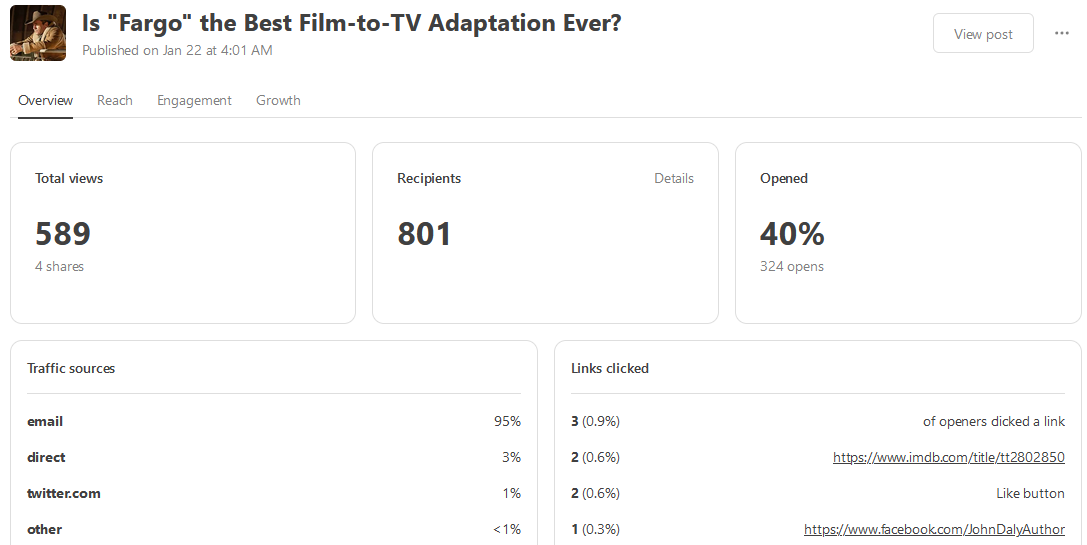Author Newsletters Have Never Been Easier
With Substack, it's a piece of cake to build a following and engage readers.
One of the first bits of marketing advice my publisher gave me, when I signed my first publishing-contract with them over a decade ago, was to create an author newsletter. You’ll find that same suggestion in just about every book or blog on the topic of author-marketing, and there’s a reason for that: it’s true.
A newsletter is a great tool for connecting directly with your readers and anyone else who finds you, or the things you write about, interesting. You can update people on what’s going on in your life or your writing, which upcoming events you’ll be participating in, what sales are going on for your books, etc. It’s really a win-win for an author. It just requires a little time.
So, heeding my publisher’s advice way back when, I set up a newsletter using a very popular newsletter tool: MailChimp. Functionality-wise, it did the basics of what it was supposed to:
let me add email addresses to a list
provide embedding code to let people sign up for my newsletter via my website
let me compose email messages
send out those messages to people on my list
But frankly, I grew to hate MailChimp. The user-interface was so clunky, tedious, and easy to make formatting mistakes in that I gave up using it for a long time. I instead focused my online marketing efforts on social media (which was way easier). What I didn’t realize during that time (because I wasn’t logging into MailChimp) was that a lot people (I’m talking hundreds) were signing up for my newsletter through my website (which I was promoting directly and indirectly on social media), but were getting nothing from it in return.
When I finally discovered this, it struck me that I had been ignoring a prime marketing opportunity to engage those people — people who cared enough about me and/or my work to actually provide me with their email address. And it happened just because I found MailChimp to be too much of a hassle.
Being active on social-media is a very good thing for an author and their brand (which is why I focus on it a lot in the Book Marketing for Authors newsletter. I was doing well in that arena, but I wasn’t following up on those social-media efforts nearly as effectively as I could have.
To be fair, I should mention that I haven’t messed around with MailChimp in a few years now. It might be much easier to use than it was back then, and if you happen to use it and like it, by all means don’t let me dampen your view of it. But the newsletter system I left MailChimp for, and merged all my subscribers to, is so freakin’ awesome that I’d feel negligent if I didn’t spread the good word about it to all of you.
I’m talking about Substack, which is what I’m using to communicate with you all right now. Substack comes with all kinds of great features, while remaining very clean and simple.
Here’s what I like about it:
Setting up an account is a piece of cake
Just go to Substack’s home page and click on “Create your Substack” to get started.
You don’t have to log in every time you use it
You don’t need a password. Once you’ve created your account, you’re emailed a confirmation link. Once you click on the link, you’re ready to go, and Substack remembers you and your device… forever (or until you decide, for some reason, to log out).
It’s incredibly easy and intuitive
Typing, formatting, and embedding media is a cinch. The user-interface is very friendly. Here’s what a newsletter looks like in edit mode:
The content you’re working on auto-saves every few seconds, and older revisions of your work are automatically backed up (you’re never going to lose anything you’ve typed).
It’s totally free
No explanation required.
Easily import your email list, and even old posts
Substack lets you move over your email addresses from other popular newsletter services and spreadsheets.
You can also import past blogs and newsletters you’ve written for other platforms, including Medium, Beehiiv, Ghost, Mailchimp, WordPress, TinyLetter, Tumblr, Webflow, and a website with an RSS feed.
More than just written content
Want to try something different than a text newsletter? You can also record or post audio or video newsletters.
Here’s a screen shot from a video interview I did with a rock band:
To see how Substack videos look and operate, you can check out the interview itself here.
A homepage for your newsletter
When you create a Substack account, you also get a handsome Substack landing page that displays all of your newsletter posts (there are multiple presentation styles, fonts, and colors you can choose from). You can even attach one of your own domain-names to the landing page. For example, I purchased DalyGrind.net through GoDaddy, and now use it for my Substack page:
There’s also a comment section under each article, where you can engage with readers.
Attract new subscribers through the Substack Network
A ton of writers, writing on a ton of topics, now use Substack as their online platform. In addition to their writings being optimized for search engines, Substack’s algorithms do a fantastic job of recommending their newsletter to readers whose interests align with the types of things they write about. Almost 150 of my subscribers came directly from the Substack Network.
Amazing analytics
Substack tells you almost everything you’d like to know about your readers and subscribers, from where they live, to how they found your newsletter, to which of your articles they’ve viewed, to which links they’ve clicked within your articles.
Analytics are very useful in identifying your audience, what interests them, and seeing what compels them to click on your book links.
The option of a revenue stream
My author newsletter is totally free, but some writers use Substack to make money. The platform lets you put some or all of your content behind a pay-wall, which only paying subscribers can access. I won’t get into too much detail on this feature, since an author newsletter is primarily a promotional tool, and you don’t normally want to charge people to sell something to them. But there’s a lot of good documentation on Substack, if this is something you’re interested in.
The Big Question: What Should I Write About in My Author Newsletter?
Some authors focus on the things I listed up top: the direct marketing of their book(s), author events, promotional sales, etc.
I take a bit different approach, since I think the “hard sell” can get a little monotonous and annoying to readers. While I include the promotional stuff in every article I write, I focus on a different topic each week. The idea is to try and pull in new readers who are interested in that topic, and then clue them in that I’m an author who writes novels that they also may be interested in.
Below are some newsletter articles I’ve recently written. If you check them out, you’ll see that my books are pitched toward the bottom:
Something else you may notice is that Substack encourages first-time readers to subscribe to your newsletter, which also helps build your reader following.
So, there it is. I can’t recommend Substack highly enough… and I promise you that the company isn’t paying me a dime for this ringing endorsement (darn it).
If you start your own Substack newsletter, and you have any questions, just let me know!




